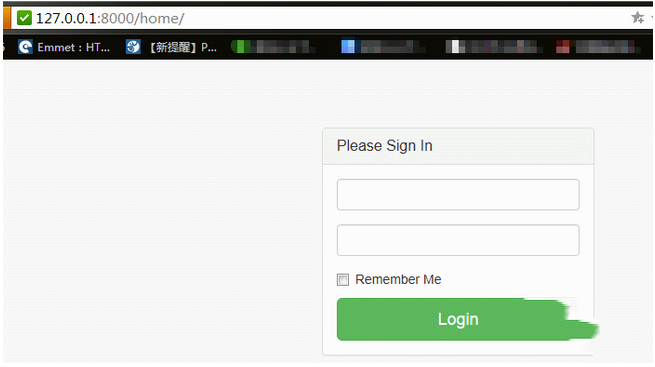BootStrap扔進Django裡的方法詳解
編輯:關於JavaScript
因為django的版本差異化比較大,所以以下配置僅供學習參考。
D:\www\mysite>python --version
Python 2.7.5
>>> print django.__version__
1.9.4
本記錄不作細說,主要配置過程如下:
1.settings.py最後一段,關於靜態文件的配置
# Static files (CSS, JavaScript, Images)
# https://docs.djangoproject.com/en/1.9/howto/static-files/
SITE_ROOT = os.path.join(os.path.abspath(os.path.dirname(__file__)), '..')
STATIC_ROOT = os.path.join(SITE_ROOT, 'static')
STATIC_URL = '/static/'
STATICFILES_DIRS = (
("css", os.path.join(STATIC_ROOT, 'css')),
("js", os.path.join(STATIC_ROOT, 'js')),
("images", os.path.join(STATIC_ROOT, 'images')),
("bower_components", os.path.join(STATIC_ROOT, 'bower_components')),
)
2.urls.py 關於路由的配置
urlpatterns = [ url(r'^admin/', admin.site.urls), url(r'^$', views.index), url(r'^home/', views.home), ]
3.views.py 視圖設計,簡單得不能再簡單的那種。
def home(request):
return render_to_response('home/login.html')
4.模板調用 home/login.html 頁面對於靜態文件css, js,以及圖片等調用。
<!-- Bootstrap Core CSS --> <link href="/static/bower_components/bootstrap/dist/css/bootstrap.min.css" rel="stylesheet"> <!-- Custom CSS --> <link href="/static/css/sb-admin-2.css" rel="stylesheet"> <img src="/static/images/xjlxprocess.png" />
5.最後,我的目錄結構,就如網上其它文章所描述的那樣。
website ---------static ---------|-----css ---------|-----js ---------|-----images ---------|-----bower_components ---------templates ---------|-----home ---------|-----------login.html ---------|-----admin ---------website
6.站點打開如下:

以上內容是小編給大家介紹的BootStrap扔進Django裡的方法詳解,希望對大家有所幫助,如果大家想了解更多資訊敬請關注網站!
小編推薦
熱門推薦